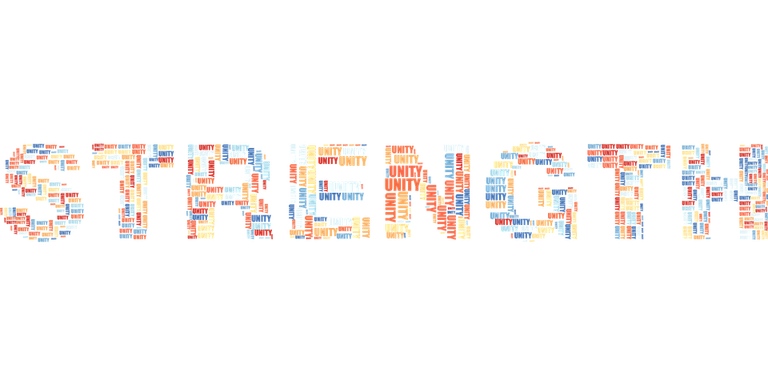
What is a multicultural education? Multicultural education is a set of strategies and materials in education that were developed to assist teachers when responding to the many issues created by the rapidly changing demographics of their students. It provides students with knowledge about the histories, cultures, and contributions of diverse groups; it assumes that the future society is pluralistic. It draws on insights from a number of different fields, including ethnic studies and women studies, but also reinterprets content from related academic disciplines.
So how do we implement multicultural education in schools? It seems very appropriate if we refer to James A. Banks. He explained that in practice, learning multicultural values must include five dimensions:
- Content integration, the integration of education in the curriculum in which involve diversity in the educational culture whose main purpose is to remove the prejudice.
- The construction of knowledge is realized by knowing and comprehending comprehensively the diversity that exists.
- Reduction (prejudice) of bias born from interaction among diversity in education culture.
- The pedagogic of human equality gives equal space and opportunity to each of the various elements.
- The empowerment of school culture.
While H.A.R Tilaar said that to implement this model should also be considered six things: first of multicultural education should be dimensionless right to culture and local identity. Secondly, optimizing the local culture in tandem with the appreciation of national culture. Third, normative multicultural education is a model that reinforces a national identity that continues to be without eliminating the existing local culture. Fourth, multicultural education is a social reconstruction, should not be trapped in ethnic, religious, or racial fanaticism. Fifth, multicultural education is pedagogic empowerment and pedagogic equality in diverse cultures. And sixth, multicultural education aims to realize the vision of the future and ethics of the nation.
From the above two views, the key to the implementation of multicultural education are schools and educators. Schools should design learning programs that demonstrate the values of multiculturalism. Schools need to analyze the development of multicultural-based learning models. For example is the demands of subject competencies to be provided to learners in the form of knowledge, skills, and ethics. Schools should also look at the competence of educators in applying multicultural values, taking into account the cultural background of learners' conditions, and analyzing the characteristics of multicultural subjects. Relevant subjects and great opportunities are taught these values, such as religion, civic education, social science, and local content, should be designed to give a profound impression to learners. While subjects that do not have this material, the process of integration of values of multiculturalism can be done in learning.
In the process of integrating the value of multiculturalism to irrelevant subjects demanded the skills and abilities of educators. So, what has been stated by James A. Banks above, it is necessary to be considered by educators to be able to apply multicultural education. First, the process of integrating the education of multicultural values. Here educators should strive to provide or use examples and materials from different cultures and groups to teach key concepts, principles, generalizations, theories, and others while teaching a particular subject or subject.
Secondly, in the process of knowledge generation, educators seek to assist learners in understanding, figuring out, and determining how a knowledge or theory is essentially implicitly created by the influence of certain cultures, certain circles, groups with particular social status occurring at that time . Third, the reduction of prejudice is the effort of educators to assist learners in developing positive attitudes toward differences. Fourth, pedagogic equality is the effort of educators to treat equally indiscriminately in the learning process in the classroom. This will be seen from the methods used, how to ask, the appointment of learners, and grouping learners. And last is the empowerment of school culture and social structure should be shown by educators so that learners can feel the empowerment and cultural equality. Thus, the spirit of multiculturalism must be reflected in all school activities.
Finally, multicultural education does have to provide an enlightenment. It must provide wisdom to see cultural diversity as a fundamental reality in people's lives. Conflict arising in the middle of society one of them triggered because it can not accept differences and disagreement on a problem. With multicultural education, it is hoped that it will be able to educate young people who are democratic, tolerant, and sensitive to diversity issues by offering constructive solutions.
References:
- Multicultural Education
- Tilaar, H.A.R. Multikulturalisme; Tantangan-tantangan Global Masa Depan dalam Transformasi Pendidikan Nasional. Jakarta: Grasindo. 2002
- A. Chairuman, Uwes and Ruslan Pasari. Menerapkan Pendidikan Multikultur di Sekolah. Paper
Thank you for posting about this. I had always thought that in my Western education, we were always reading works from dead white men! Recently, my school system started to incorporate works into our required curriculum such as The Joy Luck Club by Amy Tan and The House on Mango Street by Sandra Cisneros.
Thanks for the article
Kayaknya Perlu terjemahannya bang.... hehehehe
Maklum tidak mengerti bahasa Inggris....
I agree with that!👆👆👆 sure, the implementation of multicultural educations are school and of course education! Great article.
Sangat setuju, hendaknya jadi berguna untuk kita semua...
Implimentasi for education is one way for the succecc...
Terimakasih telah berbagi..
Salam sukses @teukumukhlis...
So great Article Broo
smart article
Waw article yg bgus. Sangat mmberikan manfaat khusus nya sprti saya yg seorang guru. Trimakasih telah share article ini
Multicultural education is very important for Indonesia, because Indonesia is a country with multi etnich
ulasannya sanga bagus tentang multikulturalisme, apalagi yang ada di sekolah. sekolah yang merupakan muniatur masyarakat yang terdiri dari berbagai etnis ras dan agama, sangat rentang sekali terjadinya konflik.
apalagi dengan emosional yang di miliki remaja masih labil.
artikel yang menarikk,,,